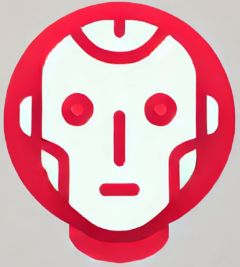Open-Source AI: Innovation or Anarchy
In 1991, Linus Torvalds released the first version of what would become Linux—a free and open-source operating system that would eventually power everything from servers to smartphones. Like Linux, today’s open-source AI movement is igniting excitement and anxiety in equal measure. Advocates hail it as the democratization of artificial intelligence, while critics warn of dangerous tools falling into the wrong hands. As the line between innovation and anarchy blurs, the debate intensifies: is open-source AI opening the door to a better future or ushering in uncontrollable chaos?
The Promise of Open-Source AI
At its best, open-source AI drives collaboration and accelerates technological progress. Developers around the world can contribute to models, refine algorithms, and build ethical guardrails. This decentralization not only fosters innovation but also makes AI more accessible to smaller companies, researchers, and independent creators.
- Transparency and Accountability: Open-source projects allow anyone to inspect the code, reducing the risks of hidden biases or malicious backdoors.
- Rapid Advancement: Crowdsourcing innovation often leads to faster iteration, enabling breakthroughs without waiting for major corporations or institutions.
- Democratization of Technology: By distributing powerful tools, open source encourages a more balanced AI ecosystem where startups and universities can play just as important a role as tech giants.
The Risks Behind the Curtain
Yet, with great power comes significant peril. Unlike proprietary systems, where access is tightly controlled, open-source AI models can be downloaded, modified, and deployed by virtually anyone, anywhere—with little oversight.
- Weaponization of AI: Open-source models can be repurposed to generate deepfakes, misinformation, or even aid in cyberattacks.
- Lack of Regulation: No universal framework currently exists to monitor or restrict the distribution of open-source AI tools.
- Quality and Safety Concerns: Without standardized testing, models can produce unpredictable or dangerous outputs, especially when community contributions are not properly vetted.
These issues raise urgent questions about the governance of open-source AI development. Can communities self-police, or is external regulation an inevitable necessity?
The Tug-of-War Between Control and Freedom
The dichotomy of open-source AI: innovation or anarchy reflects a broader philosophical divide—between those who trust open ecosystems and believe in collective intelligence, and those wary of misuse and advocating for stricter controls.
Major players like Meta and Hugging Face are actively navigating this middle ground, providing powerful models while experimenting with usage restrictions, licenses, and community guidelines. Even so, the line between responsible sharing and reckless release remains thin.
Where Do We Go From Here?
Striking a balance between openness and safety will define the next chapter of AI development. One potential path forward lies in the establishment of standardized ethical and technical protocols—developed collaboratively by governments, tech companies, and independent researchers.
As more stakeholders join the conversation, it’s crucial to draw lessons from the evolution of other open technologies. Just as the open-source software world eventually embraced maturity, guardrails, and governance, so too can the AI community. For a deeper dive into how collaborative models are shaping responsible AI, visit Hugging Face, a leader in community-driven AI development.
Conclusion
The future of open-source AI hinges not on closing doors but on opening them responsibly. When wielded with care, transparency, and cooperation, open-source AI can drive transformative innovation. But without foresight and structure, it risks spiraling into unchecked anarchy. The choice, ultimately, is not between freedom and order—but how we harmonize the two for the collective good.
